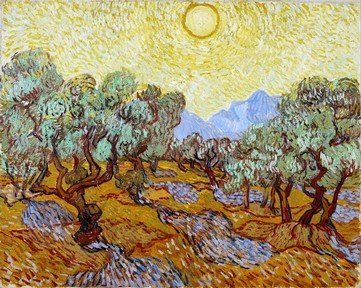Quiz Answer Key and Fun Facts
1. Popularly regarded as the father of Italian painting, whose version of the "Last Supper" is one of a set of frescoes in the Scrovegni Chapel in Padua, Italy?
2. A fresco in the Museo di San Marco, Florence, is one of the works of which Italian friar who moved into what was then a friary in 1436? Originally named Guido di Pietro, under what other name is he renowned for his religious paintings and his piety?
3. Which Dutch artist, whose name suggests his father might have been a cobbler, was commissioned in 1464 to create an altar piece for the church of St Peter in Leuven, Belgium? The work is a triptych and the centre piece depicts the "Last Supper".
4. One of the frescoes on the wall of the Sistine Chapel depicting the "Last Supper" was painted around 1480. Which artist, considered to be the least talented of a team of painters brought to Rome from Florence, is credited with the painting?
5. Which Italian Renaissance artist produced three "Last Supper" frescoes in Florence? One is in the refectory of the Convent of the Ognissanti and dates from about 1480.
6. Painted using tempera on plaster and stone in the monastery of Santa Maria delle Grazie in Milan, this "Last Supper" dates from 1494. It was painted by probably the most famous Italian Renaissance artist, and has been become even more renowned through a book by Dan Brown. Who could this be?
7. Now in the Prado, Madrid, this panel of the "Last Supper" was painted around 1500 for the altar of the church of San Esteban in Valencia. Who was the redundantly named Spanish artist?
8. This version of the "Last Supper" is just one of the many panels in the magnificent altarpiece in Seville Cathedral showing incidents in the life of Jesus. The whole masterpiece was carved and painted by one Flemish craftsman and was created around 1500. What was the name of this genius?
9. One of the set of frescoes created around 1518-19, this "Last Supper" was by a very famous Italian Renaissance artist. It is found on the walls of the loggia which bears his name in the Vatican. Can you name this angelic figure?
10. Now in the Kunstmuseum, Basel, this "Last Supper" painting, done c. 1527, was by a German artist. Can you name the artist who was especially famous for his portraits of notable people such as Henry VIII of England?
11. Another "Last Supper" altarpiece, this one by a Flemish artist, was painted for a church in Genoa about 1530, but is now in the Louvre. Which artist, whose more famous work was "Death of the Virgin", completed the altarpiece?
12. Which colourful Venetian artist made several versions of the "Last Supper" for the church of St Mark, Venice, and also one painted around 1592 for another newly built Venetian church? The latter version is innovative in that it shows the scene from an oblique overhead angle.
13. This "Last Supper" work of oil on canvas is in the National Gallery of Ancient Art, Rome, and was made around 1625 by which multi-named French artist who did most of his work in Italy?
14. Now in the Louvre in Paris, this version of the "Last Supper" was painted in oil on canvas in the 1640s. Who was the artist, a man described as the best of the French Baroque painters?
15. One version of the "Last Supper" dates from 1668, and is now in the Museum of Fine Arts, Lyon, France. Can you name the famous Belgian who painted it?
Source: Author
davejacobs
This quiz was reviewed by FunTrivia editor
ponycargirl before going online.
Any errors found in FunTrivia content are routinely corrected through our feedback system.
